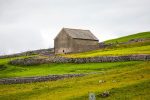Exploring Yorkshire’s Unique Connection to Ancient Egypt and the Field of Egyptology

Separated by a lot of distance and even more time, Yorkshire and the oases of ancient Egypt couldn’t seem further apart. Yet, Yorkshire has more than a few remnants from its Egyptomania in the past, and it’s part of an eye-widening thesis that North African mummies have been buried in northern soil. Here’s a brief exploration of Yorkshire’s unique connection to one of the world’s most mysterious ancient societies.
Ancient Egyptian Influence
The influence of ancient Egypt needs little introduction. Today, so much is unknown about its centuries-spanning kingdoms. That doesn’t stop its unique visuals, animalistic pantheon and spooky mummies from being a cultural mainstay in entertainment media. Symbols like the ankh persist today while movies like The Mummy broke the box office on release, and there’s even a whole genre of iGaming inspired by Egypt’s recognisable sights. More broadly, the great deserts are represented in games like the Sahara Riches Cash Collect slot, while others use symbols like the eye of Horus or Anubis on their reels.
Alongside the Romans and the Greeks, ancient Egypt has captured the imagination of a lot of modern media. Just like those cultures, however, there can be a discrepancy between what you see on screen and the real facts of history. That’s something Yorkshire, and the rest of Britain, learned in 1700s when Egyptomania gripped many Western countries.
Yorkshire’s Egyptomania
Starting in the 1700s, it kicked into overdrive in the 1800s and 1900s, when modern Egyptology began. The mysterious buildings of Egypt inspired works of architecture, best seen by the pyramid-shaped graves that dot Britain. In Yorkshire, pyramidologist Charles Piazzi Smyth (known for his accurate Giza pyramid measurements) was given his own pyramid grave in Sharow, near Ripon.
Elsewhere, a pyramid marks the gate of Castle Howard. It also has an obelisk, another remnant of Egyptomania that you can find plenty of in Yorkshire. Another one is right in the middle of Ripon’s market square, with more obelisks in Sheffield, Birdwell and more notably, the Scarborough War Memorial. Many of these buildings were designed by local Yorkshire nobles, or their architects, who were influenced by Egypt’s striking architecture.
It was long thought that this was Egypt’s only influence on Yorkshire and surrounding areas. However, more recent findings have unearthed mummies in the area.
 The Yorkshire Mummies
The Yorkshire Mummies
Yorkshire Egyptologist Joann Fletcher has turned her eye back home in recent decades, investigating Egypt’s influence on the North. She’s hosted art galleries that show off Egypt-inspired architecture, including the examples we mentioned above. However, it’ll be the Yorkshire mummies that turn the most heads.
More than sixty mummies have been found in or around York, more than any other mummified remains found in Britain. What’s more, they showed evidence of being worked on with Mediterranean tools, and some appear to have come from North Africa. So how did African mummies arrive in Yorkshire?
If you know your history, the answer here is simple – the Romans. The Roman Empire spanned North Africa at its heights and, quite famously, it all started when the Romans put an end to Cleopatra’s Ptolemaic Kingdom. Cleopatra seduced Caesar, and then Mark Antony after Caesar’s assassination, and the War of Actium followed. It ended with Caesar’s chosen heir Octavian seizing Egypt for the Romans, then crowning himself as Augustus, the first Roman Emperor. The Pax Romana followed – 200 years of peace and expansion.
In that period – 27 BC to 180 AD – both the Hadrian and Antonine Walls were built as Rome continued the occupation of Britannia. Many Roman legions were sent to Britain, which would have included a few soldiers recruited from places like Carthage in Tunisia and of course, Egypt. But they didn’t just bring their bones, they brought their customs and other keepsakes like silver coins adorned with Cleopatra’s visage. Per Fletcher’s claims, these Egyptian imports include the northernmost temple dedicated to the Cult of Serapis and Isis worship.
These rare glimpses of ancient Egypt seem to have been captured more in Yorkshire than anywhere else in Britain. That’s no doubt because the land was the northern reach of Roman occupation, a shield against the unromanised people to the north. That meant a lot of Roman legions stomping about, and a lot of foreign soldiers shipped in to reinforce them.









